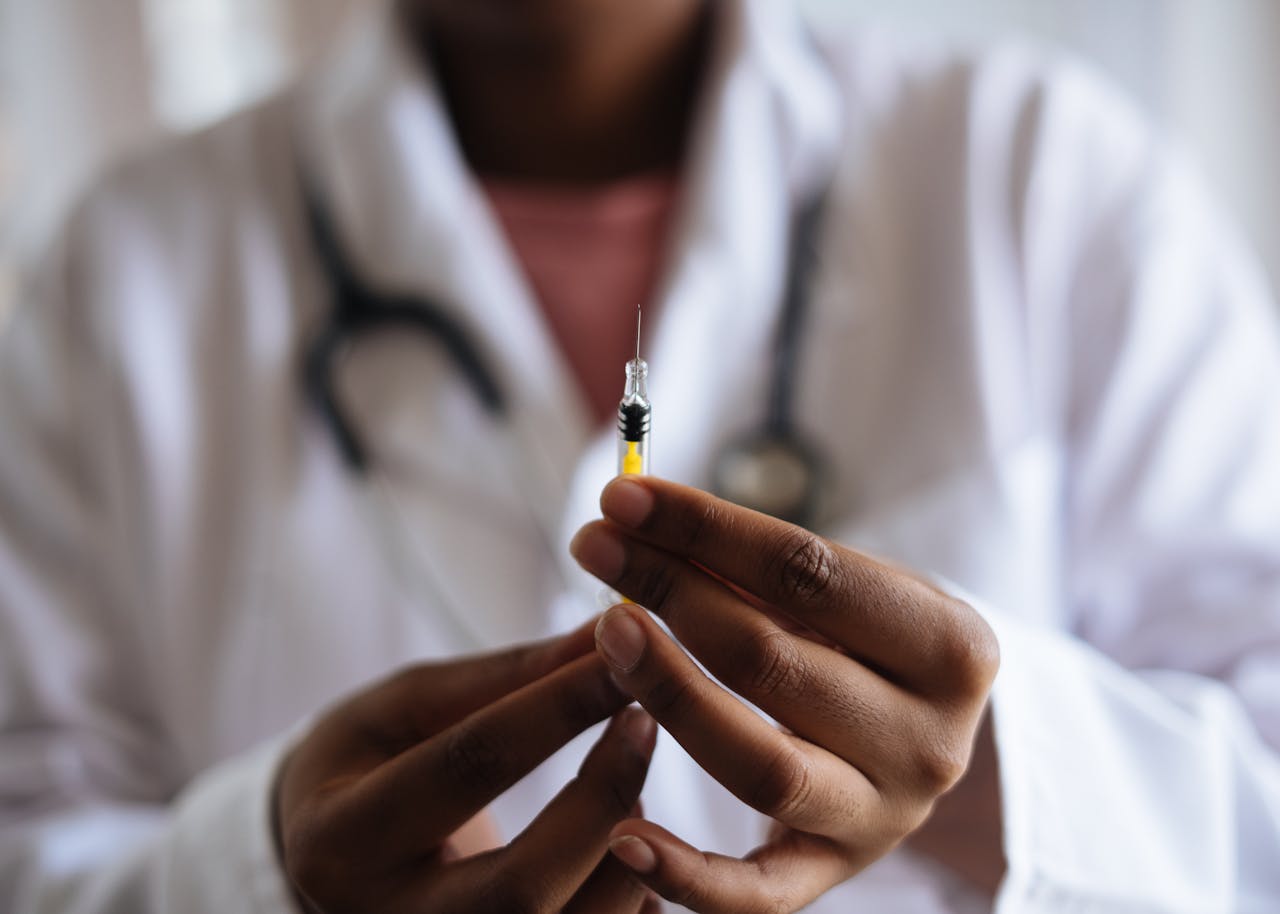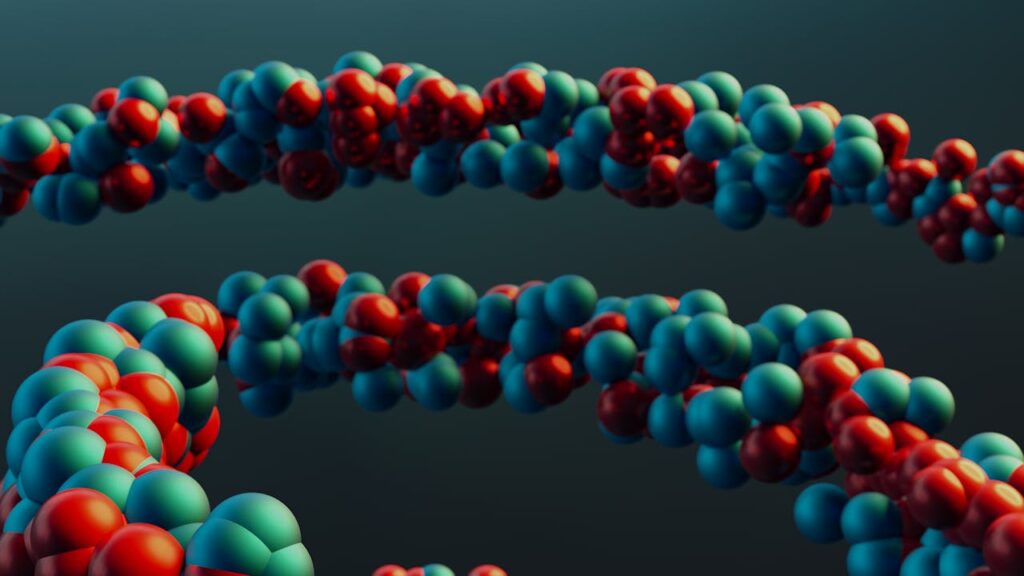Columbia Researchers Created an Injection That Melts Belly Fat Without Harming Your Body

For years we have been taught to fight it, cut it, burn it away. But what if the real answer is not destruction at all, but transformation?
Scientists at Columbia University have discovered something that could change the way we look at our bodies forever. It is called P-G3, a breakthrough nanomaterial that does not simply shrink fat like surgery or crash diets. Instead, it reprograms fat at the cellular level, teaching it to work with your body rather than against it.
This is not about quick fixes or shortcuts. It is about rewriting the story of fat itself and what that means for our health and future.
The Battle Beneath the Surface
The most dangerous fat is not the kind you can see in the mirror. It is the kind that hides deep inside the body, wrapping tightly around vital organs. This is visceral fat. Unlike the fat under your skin, visceral fat is metabolically active, secreting inflammatory compounds that drive chronic disease. It has been directly linked to diabetes, cardiovascular illness, and ongoing inflammation.
What makes it so hard to treat is location and behavior. It sits deep in the abdomen, surrounding organs like the liver and pancreas. Because fat in the body is divided into separate depots, targeting one specific area is nearly impossible. Most current approaches work systemically or destructively, hitting all fat at once. Liposuction may remove fat but it also damages healthy tissues. Pharmaceutical treatments attempt to shrink fat throughout the body but often bring serious side effects. Fat dissolving injections destroy cells permanently, which can lead to uneven fat distribution.

And yet, fat itself is not the enemy. Certain types of fat are necessary for hormone balance, insulation, and survival. Removing them indiscriminately only creates new problems. Add to this the hormonal shifts that come with aging, along with high cortisol levels produced by chronic stress, and visceral fat becomes even more difficult to manage, especially in older adults.
This is why scientists at Columbia University are pursuing a different path. They have developed P-G3, a positively charged nanomaterial that offers a way to shrink stubborn fat without surgery, tissue destruction, or systemic side effects. Their vision is not to force the body to burn fat recklessly, but to help it regulate fat more intelligently and precisely. As the researchers describe it, “The ability to target fat cells and safely uncouple unhealthy fat formation from healthy fat metabolism would be the answer to many people’s prayers.”
Teaching Fat to Remember Its Youth
Most treatments see fat as something to destroy. Cut it out, burn it off, freeze it away. But what if fat could be taught to change instead of being erased? This is the promise of P-G3.
Unlike destructive methods, P-G3 works through cellular reprogramming. Its positively charged structure locks onto the negatively charged extracellular matrix of fat tissue, creating a direct and specific pathway. This precision means it influences only the fat depots it touches, avoiding harmful spillover to muscles, nerves, or vital organs.

Once inside, the material sets off a quiet transformation. Fat cells stop hoarding excess lipids and begin to act younger, more alive, and metabolically active. Instead of oversized storage containers, they resemble the smaller, energy-burning cells found in newborns and elite athletes. As Dr. Kam Leong explains, “Our studies highlight an unexpected strategy to treat visceral adiposity and suggest a new direction of exploring cationic nanomaterials for treating metabolic diseases.”
Part of this shift comes from how P-G3 interacts with core cellular pathways. It suppresses mTOR signaling, which normally pushes fat cells to store and grow larger. It also lowers NAD+ levels within these cells, a trigger that halts their progression into lipid-stuffed giants. The result is a recalibrated fat depot that behaves less like a warehouse and more like a finely tuned metabolic engine.
This dual action is what makes the discovery revolutionary. P-G3 not only shrinks fat cells, it reshapes their environment to function more intelligently. It fosters healthier cell turnover, reduces inflammation, and preserves the essential roles fat must play in cushioning organs and balancing hormones. Or as Dr. Leong puts it, “With P-G3, fat cells can still be fat cells, but they can’t grow up.”
From Lab Discovery to Human Possibility
Science is often about asking a simple question: how can we make this safer and smarter? For P-G3, the answer came through a new variant called P-G3-Chol(5). By tagging the nanomaterial with cholesterol, researchers created particles that self-assemble and show an even stronger preference for fat tissue. This design reduces the risk of the material collecting in organs like the liver or kidneys.
In early studies with mice, the results were striking. Animals treated with P-G3-Chol(5) experienced up to a 45 percent reduction in fat mass. This happened without any change in appetite, without an increase in physical activity, and without the loss of lean muscle. The fat simply shifted in how it was managed, reprogrammed rather than erased.
The precision of this approach opens doors far beyond basic weight control. Because P-G3 works locally, it could serve as a delivery system for drugs or gene therapies that need to act only in fat depots. Imagine reactivating powerful metabolic regulators like thiazolidinediones, once set aside due to cardiovascular risks, but now directed exclusively to adipose tissue where they are most effective.
The implications reach into medicine and aesthetics alike. Much like Botox changed how we treat muscles, P-G3 could reshape how we approach fat. Instead of surgery and long recoveries, there could be a targeted, noninvasive option for areas such as the chin, upper arms, or lower abdomen. It is a technology that speaks to both health and confidence, healing the inside while shaping the outside.
Columbia researchers are continuing to refine the chemistry of this platform, with patents pending and broader safety trials already on the horizon. Their vision is a tunable therapy that could one day transform the treatment of obesity, metabolic disorders, and fat-related disease.
Reprogramming More Than Fat
What if the body’s breakthrough could also be the mind’s? The discovery of P-G3 is about more than shrinking waistlines. At its core, it is about teaching cells to behave differently, to stop clinging to what weighs them down and to step into a more active, youthful state. That lesson belongs to all of us.
Visceral fat is dangerous not only because of disease risk but also because of what it signals—stress, imbalance, and habits that no longer serve us. When scientists show that fat cells can be reprogrammed, they reveal a powerful truth: change does not always mean destruction. Sometimes it means transformation.
In daily life, that principle translates into how we approach our own growth. Instead of trying to cut out every flaw or burn away every setback, we can learn to rewire our habits. Just as P-G3 nudges fat cells toward energy-burning rather than energy-hoarding, we can train our minds to turn obstacles into fuel. A walk instead of another hour at the screen. A pause for meditation instead of drowning in distraction. A choice to eat for energy rather than for stress.
Neuroscience already shows that habits shape focus, and that the brain can be rewired through consistent practice. The same way scientists are rewriting the story of fat, you have the power to rewrite the story of your drive, your focus, your motivation. P-G3 may one day reshape bodies, but you can begin reshaping your life right now.
Reprogramming Fat, Reprogramming Life
The story of P-G3 is not just a story about fat. It is a story about possibility. For decades, we thought the only way forward was destruction—cut it out, burn it away, fight it at all costs. But this breakthrough reveals a new path. Transformation instead of elimination. Reprogramming instead of punishment.

If scientists can teach fat cells to behave differently, then maybe we can teach ourselves the same. The habits that drain us, the thoughts that weigh us down, the patterns that hold us back—none of them have to define us. Like a fat cell made new, we can shift from storage to energy, from stagnation to movement, from resistance to growth.
The future of health may be about more than shrinking what we do not want. It may be about reimagining what is already within us. P-G3 offers a glimpse of that future for the body. The rest is up to us to apply to our minds, our choices, and our lives.
Loading...

